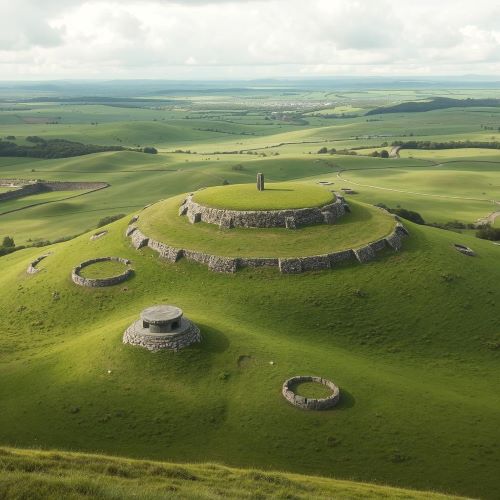Palatine Hill : History of an Empire
At a glance
| Description | |
|---|---|
| Mythology | Roman Mythology |
| Country | Italy |
| Closest airport | Ciampino–G. B. Pastine International Airport (CIA) |
| Type | Constructed |
| Accessibility | 10/10 |
Introduction
Tucked between the Colosseum and the Roman Forum lies Palatine Hill, one of the most legendary and historically rich sites in Rome. It may not have the towering arches or the instant iconography of the Colosseum, but it holds something more profound—Rome’s origin story. Palatine Hill is not just an archaeological site; it’s the very ground upon which the Eternal City was founded. From its mythological roots to its imperial architecture, the hill tells a continuous story that weaves together legend, power, and legacy. It even lent its name to the word “palace,” a fitting nod to the grandeur that once stood atop its slopes.
Connection with Mythology
Palatine Hill is inseparable from the mythology that defines Rome’s beginning. It’s believed to be the setting of the Lupercal, the sacred cave where the she-wolf (Lupa) nursed Romulus and Remus. This myth is more than a bedtime story; it became a national legend that rooted the Roman identity in divine origins and fraternal destiny. Romulus, after a dispute, killed Remus and founded Rome on this very hill—an act that symbolized the sacrifices needed for statehood.
Beyond Romulus and Remus, other myths tie the hill to heroes like Hercules, who is said to have vanquished the fire-breathing Cacus here. Even earlier, Greek settlers led by Evander are believed to have inhabited the area, calling their settlement Pallantium. These overlapping legends allowed the Romans to position their city as both ancient and chosen—sanctioned by myth, might, and the gods themselves.
Ways to Get There
Visiting Palatine Hill is straightforward, thanks to its central location in Rome. Whether you’re a first-time tourist or a seasoned traveler, getting there is convenient:
-
Metro: The easiest route is Line B to Colosseo station, just a short walk away.
-
Bus: Several city buses—such as routes 75, 81, and 175—stop near the hill.
-
Walking: If you’re already at the Colosseum or Roman Forum, simply follow the signs. It’s all within walking distance.
-
Tickets: Entrance is bundled with the Colosseum and Roman Forum in a combined ticket valid for two consecutive days. Booking online in advance is recommended to avoid queues.
-
Tours: Guided tours often include skip-the-line access and rich commentary, which can significantly enhance your visit.
What to Look For
Palatine Hill is a sprawling open-air museum filled with ruins that once defined the power of the Roman Empire. Here are the highlights not to miss:
-
House of Augustus (Domus Augustea): The modest yet artfully decorated home of Rome’s first emperor still preserves vibrant wall frescoes and elegant layouts.
-
Domus Flavia and Domus Augustana: These were the public and private wings of Emperor Domitian’s massive palace complex, combining administrative spaces with lavish personal quarters.
-
Stadium of Domitian: Though its purpose remains debated, this elongated courtyard likely hosted private games and social gatherings for the imperial court.
-
House of Livia: Often attributed to Augustus’s wife, this residence features exquisite mosaics and a surprisingly intimate scale.
-
Palatine Museum: A small but enriching museum displaying sculptures, ceramics, and architectural fragments unearthed from the hill’s extensive digs.
-
Farnese Gardens: Built during the Renaissance, these were Europe’s first private botanical gardens, offering peaceful walks and excellent photo ops.
-
Temple of Apollo Palatinus: Commissioned by Augustus, it reflects his political and spiritual authority, with remnants of marble columns and a sacred library.
-
Lupercal Cave (Traditional Site): Though its precise location is debated, the symbolic connection to Romulus and Remus gives this area enduring significance.
Each site offers a tangible connection to both daily Roman life and the broader machinery of the empire.
Need a place to stay? Book your hotel room now!
Importance in cultural history
Palatine Hill is more than just one of Rome’s seven hills—it’s the spiritual and political bedrock of the Roman Empire. Archaeological evidence confirms that humans have lived here since at least the 10th century BCE. By the time of the Roman Republic, it had become the neighborhood of choice for wealthy elites and statesmen.
With the rise of the Empire, the hill transformed dramatically. Augustus set the precedent by building his palace here, and subsequent emperors followed suit. The concept of centralized imperial residence took root, eventually lending the word “palace” its etymology from “Palatium,” the Latin name for the hill.
But even beyond emperors and elites, Palatine Hill was deeply tied to Roman religion. Temples to deities like Apollo and Cybele were built on its grounds, and festivals like the Lupercalia had ritual ties to its slopes. In the Middle Ages, Christian structures were erected amid the ruins, and the Renaissance saw noble families like the Farnese reviving the land through art and horticulture.
Today, Palatine Hill stands as a powerful symbol of Rome’s multi-layered cultural history—an enduring monument to civilization’s rise, fall, and rebirth.
Best time to travel
To make the most of your visit to Palatine Hill, timing is key. While it is open year-round, certain seasons and times of day offer a more comfortable and visually rewarding experience.
-
Spring (April–June) and Fall (September–October): These are ideal times, with mild temperatures, blooming gardens, and fewer crowds.
-
Morning Visits: Beat the heat and crowds by arriving early, especially in summer. The light is also better for photography.
-
Late Afternoons: These offer golden hour views and a quieter, more contemplative atmosphere.
-
Avoiding Summer Peak: July and August can be sweltering, and there’s limited shade on the hill. Hydrate and wear sun protection if visiting during these months.
Admission is included in the Colosseum–Roman Forum–Palatine combo ticket. Since the entire archaeological area is extensive, consider allocating a full half-day or spreading the visit over two days if your ticket allows. Comfortable walking shoes, water, and a bit of historical curiosity will go a long way.
Source
Exoticca. (n.d.). Palatine Hill Guide: Ancient Rome’s Origins and Emperors’ Palaces. https://www.exoticca.com/us/blog/palatine-hill-rome/
Travel? Yes Please! (2025, January 7). Palatine Hill and Domitian’s Palace – History, Mythology and Roman Ruins. https://www.travelyesplease.com/travel-blog-palatine-hill-rome/
Roma Experience. (2024, September 19). Explore the Palatine Hill: Rome’s Mythic Past and Majestic Ruins. https://www.romaexperience.com/post/palatine-hill
Discover Walks. (n.d.). Quick History of the Palatine Hill in Rome. https://www.discoverwalks.com/blog/rome/quick-history-of-the-palatine-hill-in-rome/
Italy4Real. (n.d.). A Visitors Guide to The Palatine Hill. Retrieved from https://italy4real.com/palatine-hill/
Roma Experience. (2023, November 9). A Guide to the Palatine Hill: Everything You Need to Know. Roma Experience. Retrieved from https://www.romaexperience.com/post/palatine-hill
History Hit. (2021, July 23). Palatine Hill – History and Facts. History Hit. Retrieved from https://www.historyhit.com/locations/palatine-hill/
Rome-Museum. (n.d.). Palatine – Useful Information – Rome & Vatican Museums. Rome & Vatican Museums. Retrieved from https://www.rome-museum.com/palatine-hill-rome.php
Frequently Asked Questions
Lorem ipsum dolor sit amet, consectetur adipiscing?
Lorem ipsum dolor sit amet, consectetur adipiscing elit. Praesent convallis vestibulum justo, ac tincidunt nunc vehicula quis. Nullam id dolor quis orci malesuada feugiat. Curabitur aliquet libero at urna ullamcorper, ac ultricies nulla dapibus.
Lorem ipsum dolor sit amet, consectetur adipiscing?
Lorem ipsum dolor sit amet, consectetur adipiscing elit. Praesent convallis vestibulum justo, ac tincidunt nunc vehicula quis. Nullam id dolor quis orci malesuada feugiat. Curabitur aliquet libero at urna ullamcorper, ac ultricies nulla dapibus.
Lorem ipsum dolor sit amet, consectetur adipiscing?
Lorem ipsum dolor sit amet, consectetur adipiscing elit. Praesent convallis vestibulum justo, ac tincidunt nunc vehicula quis. Nullam id dolor quis orci malesuada feugiat. Curabitur aliquet libero at urna ullamcorper, ac ultricies nulla dapibus.
Lorem ipsum dolor sit amet, consectetur adipiscing?
Lorem ipsum dolor sit amet, consectetur adipiscing elit. Praesent convallis vestibulum justo, ac tincidunt nunc vehicula quis. Nullam id dolor quis orci malesuada feugiat. Curabitur aliquet libero at urna ullamcorper, ac ultricies nulla dapibus.
Lorem ipsum dolor sit amet, consectetur adipiscing?
Lorem ipsum dolor sit amet, consectetur adipiscing elit. Praesent convallis vestibulum justo, ac tincidunt nunc vehicula quis. Nullam id dolor quis orci malesuada feugiat. Curabitur aliquet libero at urna ullamcorper, ac ultricies nulla dapibus.







